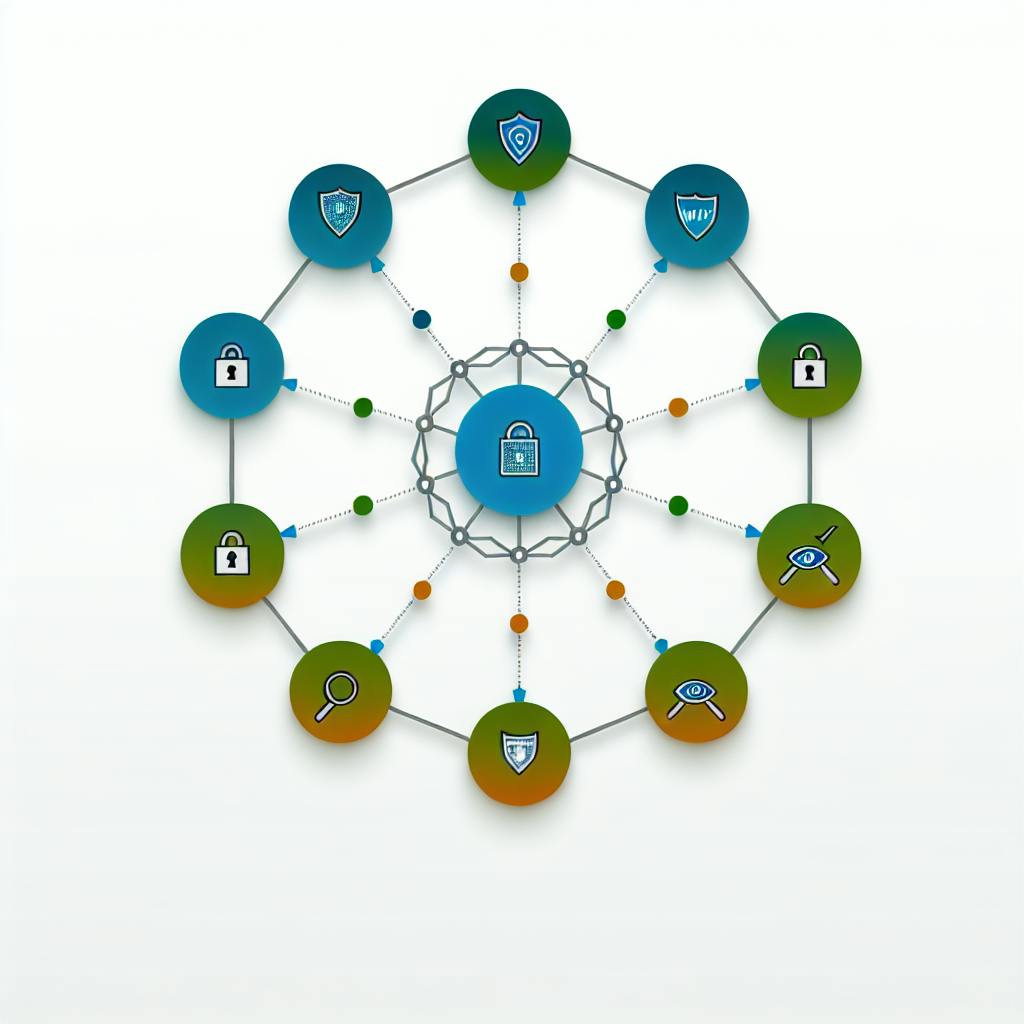Monitoring your AWS Lambda functions is critical to maintaining performance and reliability. CloudWatch provides key metrics like Duration, Errors, Invocations, and Throttles to help you track and optimize your serverless applications. Here's a quick breakdown:
- Duration: Tracks execution time to optimize costs and performance.
- Errors: Identifies failed executions for troubleshooting.
- Invocations: Monitors usage trends and related costs.
- Throttles: Flags requests denied due to concurrency limits.
Key Actions:
- Use CloudWatch alarms to detect spikes in errors or throttling.
- Analyze logs alongside metrics to identify and resolve issues.
- Create custom dashboards to visualize performance in real time.
For advanced use cases, monitor metrics like IteratorAge (stream processing delays) and InitDuration (cold start times). These insights help you fine-tune memory settings, adjust concurrency, and improve overall efficiency. Keep reading for step-by-step instructions on accessing metrics, building dashboards, and troubleshooting common issues.
Main Lambda Metrics to Track
Amazon CloudWatch offers key metrics to help you monitor and manage Lambda performance effectively.
Basic Performance Metrics
Here are the four main metrics to keep an eye on:
| Metric | Description | Why It Matters |
|---|---|---|
| Invocations | Number of times a function is executed | Helps track usage trends and related costs |
| Errors | Count of failed executions | Highlights potential reliability problems |
| Duration | Time taken to execute the function | Directly impacts costs and user experience |
| Throttles | Requests denied due to concurrency limits | Indicates resource limitations |
Pay close attention to Duration, as longer execution times can drive up costs and slow down performance. If your function nears its timeout limit, consider optimizing the code or increasing memory allocation.
To stay ahead of potential issues, set up CloudWatch alarms for Errors. A sudden spike in Errors might point to problems like:
- Database connection failures
- Issues with third-party APIs
- Memory leaks
- Poor input validation
For Lambda functions with specialized use cases, additional metrics can provide more in-depth insights.
Specialized Monitoring Metrics
Some metrics are tailored for specific environments or use cases:
- IteratorAge: Tracks the time gap between when a record is added to a stream and when it’s processed. Useful for stream-based functions.
- PostRuntimeExtensionsDuration: Measures the time taken by extensions for tasks outside the runtime. Monitor this if you’re using Lambda extensions.
- OffsetLag: Indicates delays in processing stream records when using Apache Kafka as an event source.
For stream-based functions, combine IteratorAge with Duration to assess processing efficiency. High values in both metrics may signal the need for adjustments, such as:
- Allocating more memory to speed up processing
- Reducing the batch size for stream records
- Implementing parallel processing to handle workloads more efficiently
Finding Lambda Metrics in CloudWatch
CloudWatch offers several ways to view and analyze Lambda metrics, whether through its web interface or programmatically.
CloudWatch Console Navigation
Here’s how to find Lambda metrics in the CloudWatch console:
1. Access CloudWatch Metrics
Open the CloudWatch console and click on "Metrics" in the left-hand menu. Under "AWS Namespaces", select "AWS/Lambda" to see all metrics related to Lambda functions.
2. Use Filters
The search bar lets you narrow down metrics by:
- Function name
- Version number
- Alias
- Resource tags
For example, to find metrics for a specific function version, you can search using its name, such as api-endpoint-prod.
3. Build Custom Dashboards
You can create dashboards to monitor your Lambda functions by selecting relevant metrics and organizing them into widgets. A useful Lambda monitoring dashboard might include:
| Widget Type | Metrics to Display | Recommended Time Range |
|---|---|---|
| Line graph | Invocations, Duration | 24 hours |
| Number | Error count, Throttles | Current value |
| Bar chart | Memory utilization | 1 hour |
| Heat map | Concurrent executions | 7 days |
For automation or long-term analysis, you can also retrieve metrics programmatically.
Getting Metrics Through Code
You can use the AWS CLI or SDKs to fetch Lambda metrics programmatically.
Using AWS CLI:
aws cloudwatch get-metric-statistics \
--namespace AWS/Lambda \
--metric-name Duration \
--dimensions Name=FunctionName,Value=your-function-name \
--start-time 2025-05-07T00:00:00 \
--end-time 2025-05-08T00:00:00 \
--period 3600 \
--statistics Average
Using Boto3:
import boto3
cloudwatch = boto3.client('cloudwatch')
response = cloudwatch.get_metric_data(
MetricDataQueries=[
{
'Id': 'invocations',
'MetricStat': {
'Metric': {
'Namespace': 'AWS/Lambda',
'MetricName': 'Invocations',
'Dimensions': [
{
'Name': 'FunctionName',
'Value': 'your-function-name'
}
]
},
'Period': 300,
'Stat': 'Sum'
}
}
],
StartTime='2025-05-07T00:00:00',
EndTime='2025-05-08T00:00:00'
)
You can store these results in a time-series database to track trends and set up automated alerts. These programmatic methods make it easier to scale your monitoring efforts and dive deeper into performance insights.
Finding Lambda Performance Problems
CloudWatch metrics are a key tool for spotting performance issues in your Lambda functions. By focusing on specific metrics, you can identify bottlenecks and make adjustments to improve response times, manage memory usage, and control costs.
Response Time Analysis
To identify slow-performing Lambda functions, keep an eye on duration metrics. Here’s a breakdown of what to monitor:
| Metric Type | Description |
|---|---|
| p95 Duration | 95th percentile response time |
| p99 Duration | 99th percentile response time |
| InitDuration | Time taken for cold starts |
Here’s how to approach your analysis:
- Look at p95 and p99 metrics to detect performance outliers that could indicate issues.
- Pay attention to InitDuration separately to spot cold start delays and compare them to the performance of warm functions.
sbb-itb-6210c22
Tracking Errors and Throttling
Use CloudWatch metrics and logs to spot and fix Lambda errors and throttling issues.
Connecting Metrics to Logs
The Errors metric in CloudWatch is your go-to for tracking function failures. If you see error rate spikes, link them to CloudWatch Logs to find the problem. Focus on these key metrics:
| Metric | Purpose | Investigation Method |
|---|---|---|
Errors |
Tracks function failures | Look at log entries for stack traces |
DeadLetterErrors |
Highlights event processing issues | Check dead letter queue messages for patterns |
Duration |
Flags performance problems | Review logs for signs of timeouts |
Here’s how to connect metrics with logs:
- Step 1: Identify the timestamps of error spikes in your metrics.
- Step 2: Go to CloudWatch Logs for the same time period.
- Step 3: Use error-related keywords to filter log entries.
- Step 4: Analyze stack traces and error messages to find the root cause.
Once you've addressed errors, shift your focus to throttling metrics to ensure your Lambda function runs smoothly.
Fixing Throttling Issues
Throttling happens when your Lambda function hits concurrency limits. Keep an eye on the ConcurrentExecutions and Throttles metrics to detect these bottlenecks. Here's what to look for:
| Throttling Indicator | Suggested Fix |
|---|---|
High Throttles |
Increase your account concurrency limit |
| Sporadic throttling | Use Reserved Concurrency |
| Consistent throttling | Set up Provisioned Concurrency |
Here’s how to tackle throttling:
-
Monitor Current Usage
Check theConcurrentExecutionsmetric to see if you're nearing your concurrency limits. This gives you a clear picture of your baseline usage. -
Use Reserved Concurrency
Reserve a specific amount of concurrency for critical functions. Start with a value slightly above your highest observed concurrent executions. -
Enable Provisioned Concurrency
For functions that need steady performance and reduced cold starts, configure Provisioned Concurrency to keep them ready to execute.
Summary and Further Reading
We've gone over key Lambda metrics and troubleshooting techniques, helping you better understand how to monitor and maintain performance. Keep an eye on critical metrics, interpret them correctly, and regularly review your setup to keep your Lambda functions running smoothly.
For more detailed information about Lambda metrics and CloudWatch monitoring, check out AWS for Engineers. Their resources include:
- Performance Optimization: Insights on custom metrics, setting up alarms, and creating dashboards.
- Cost Management: Tips on managing resource usage, adjusting concurrency settings, and optimizing memory allocation.
- Error Handling: Guidance on log analysis, identifying error patterns, and implementing automated solutions.
To improve your Lambda monitoring, focus on these key steps:
- Monitor essential metrics.
- Utilize custom metrics for specific needs.
- Set up alerts to stay ahead of issues.
Consistently applying these practices will help you maintain top-notch Lambda performance.
FAQs
How can I use CloudWatch alarms to monitor and reduce Lambda function errors?
To effectively monitor and reduce Lambda function errors using CloudWatch alarms, start by identifying key metrics such as Errors, Throttles, and Duration. These metrics provide insights into the frequency of errors, throttling occurrences, and execution performance.
Set up alarms in CloudWatch to notify you when these metrics exceed predefined thresholds. For example, you can create an alarm to trigger if the error count surpasses a certain value within a specified time period. Configure notifications to send alerts via email, SMS, or other channels using Amazon SNS, so you can respond quickly.
By continuously monitoring these alarms, you can proactively address issues such as misconfigurations, resource limitations, or unexpected spikes in traffic. This helps ensure your Lambda functions perform efficiently and reliably.
How can I optimize AWS Lambda performance to reduce execution time and costs?
To optimize the performance of your AWS Lambda functions and reduce costs, consider these strategies:
- Minimize cold starts: Use provisioned concurrency to keep your functions warm, especially for latency-sensitive applications.
- Optimize memory allocation: Allocate just enough memory to balance execution speed and cost. Test different memory settings to find the optimal configuration for your workload.
- Streamline code: Write efficient, lightweight code and avoid unnecessary dependencies. Smaller deployment packages lead to faster initialization.
- Use efficient data handling: Reduce payload sizes and leverage efficient data formats like JSON or Protocol Buffers. Minimize network calls by batching or caching data where possible.
- Leverage monitoring tools: Use Amazon CloudWatch to analyze metrics like invocation duration, error rates, and concurrency levels. Identify bottlenecks and adjust your function accordingly.
By implementing these practices, you can enhance your Lambda functions' efficiency while keeping costs under control.
How can I analyze and address high values in Lambda metrics like IteratorAge and InitDuration?
High values in IteratorAge and InitDuration can indicate potential performance issues with your AWS Lambda functions. Here's how to interpret and address them:
- IteratorAge measures the age of the oldest record in the event source queue before it's processed by Lambda. High values typically mean your function isn't keeping up with the incoming data. To resolve this, consider increasing the function's concurrency or optimizing its execution time.
- InitDuration represents the time taken to initialize your Lambda function during a cold start. High values here may suggest a need to reduce initialization overhead, such as by minimizing dependencies, using smaller deployment packages, or leveraging AWS Lambda's provisioned concurrency.
By regularly monitoring these metrics in CloudWatch and making adjustments, you can ensure your Lambda functions perform optimally and meet your application's requirements.


